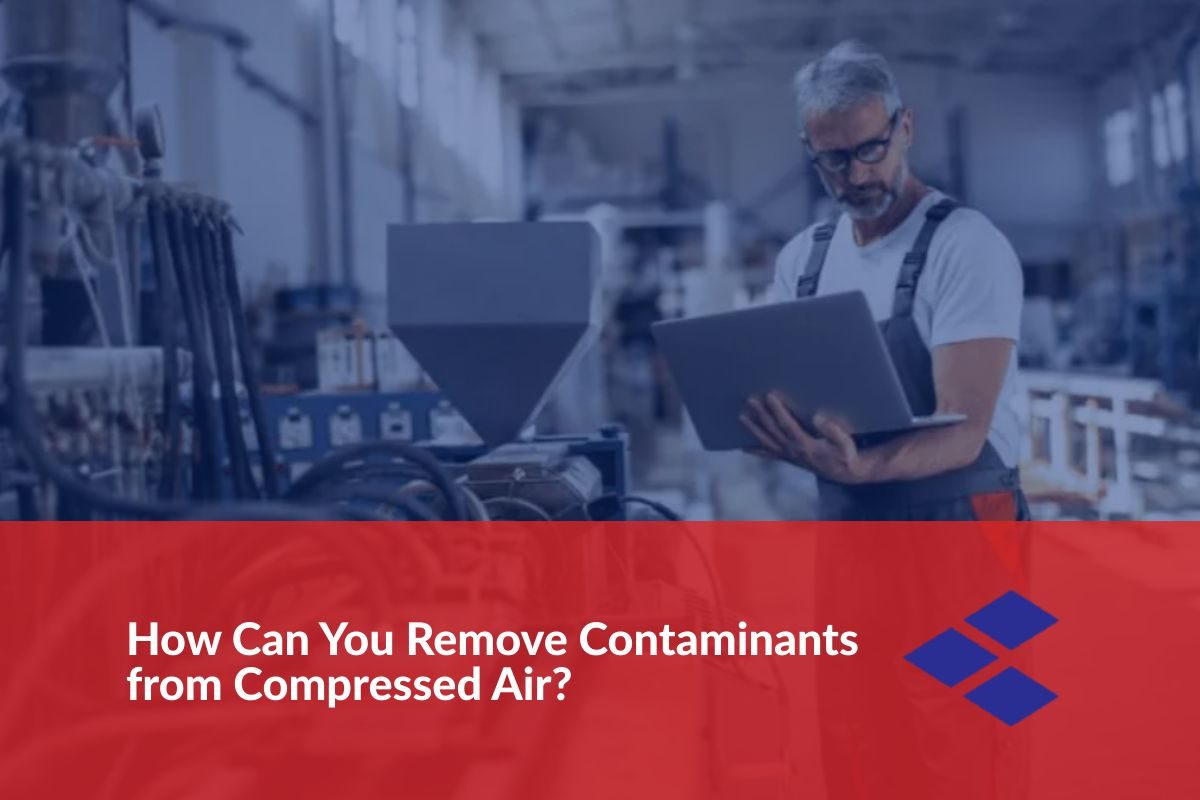
When it comes to running an industrial business, the success of your end product or service depends on all the different parts of your system running at peak efficiency. Low-quality compressed air can be a detriment to your system, resulting in a lower-quality end product and potentially costing your business money in the long run. Ensuring your compressed air is pure and free of contaminants is one of many things that positively impacts your application’s bottom line.
The Issue with Contaminants in Your Compressed Air
There are a multitude of different contaminants that may affect the quality of your compressed air. One of the most detrimental contaminants found in compressed air systems is microorganisms, which can cause various negative health effects. Microorganisms may turn up in compressed air as a result of the presence of rust. Liquid contaminants, like water and oil, can impact product quality when compressed air is used as a transfer system, such as paint spraying or powder coating. Solid contaminants, like flakes of rust, can block or clog filtration systems or cause damage to the seals on air-powered tools, which may lead to slowed or inconsistent airflow rates and increase required maintenance.
Common Contaminants in Compressed Air Systems
Several different contaminant materials may be found in any compressed air system. The presence of these contaminants is a significant issue in both the efficiency of your application and the quality of end products. There are four main categories into which a contaminant may fall:
- Water – water may be present in liquid or as an aerosol or vapor within a compressed air system.
- Oil – like water, oil contamination may take the form of either a liquid or an aerosol.
- Solid particles – Solid particles like rust flakes, pipe scale, sand grains, or even dirt are sometimes reported in compressed air systems.
- Microorganisms – mold, yeast, other fungi, viruses, and bacteria are potential microorganisms that can contaminate compressed air.
Contaminant Points of Entry
The potential points of entry for contaminants depend on the contaminant type present. For instance, oil most commonly enters a compressed air system at the compressor itself. The majority of air compressors inject oil into the chamber of the compressor, where it lubricates, seals, and then cools. Some oil may enter the air and then be delivered into the compressed air system.
Water most commonly enters the compressor system through the ambient air, which is drawn into the air compressor. Elevating the pressure of the air limits its ability to hold onto that water vapor, condensing the liquid. If the air is then cooled after compression, additional amounts of water may condense.
Solid particles and microorganisms can enter your compressed air system through the ambient air, or they may be generated within the system as a result of the presence of water.
Preventing Contaminants in Your Compressed Air System
One of the main ways to eliminate the presence of contaminants within your system is by limiting the amount of these contaminants present within the ambient air that is drawn into the system. Ensuring your air intake is located in an area free from humidity, dust, and fumes and installing and maintaining a high-quality filter at your compressor’s intake will help reduce the presence of potential contaminant materials. Waiting until you can see dirt on your intake filter is not a practical way of maintaining filters, as, by this point, the performance of your compressor has significantly decreased. The best way to reliably determine when to replace filters on your system is by utilizing pressure drop.
Water in liquid form can be removed from the compressor through the use of a condensation separator. The use of a refrigerated dryer to cool compressed air and extract water vapor is one option for eliminating water vapor contaminants. A coalescing filter may supplement the use of a refrigerated dryer when appropriate.
When it comes to removing oil contamination, consider investing in an oil-injected compressor, which has a separator designed to pull out oil and return it to the tank. For oil vapor, an adsorption filter may be required.
Dry filters and coalescing filters are both able to remove solid particle contaminants as well as microorganisms from compressed air systems.
ESA for Your Compressed Air Needs
If you need help determining the best way to remove contaminants from your compressed air system, contact the experts here at ESA. Our trained professionals will be able to assist you in determining the more practical and cost-effective method for eliminating your issues with contaminants. Contact us today for a consultation.
Arthur Pue
Arthur Pue is the President of Engineering Sales Associates. Connect with him on LinkedIn.
